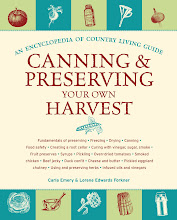CHEESE

In the simplest terms, cheese is the result of milk that has been inoculated with an acid, which causes it to coagulate into semisolid curds. The curds are strained out from the remaining liquid, or whey, and drained or pressed to form a solid mass-cheese. Traditionally, cheese was one of the only ways to preserve milk in the absence of refrigeration and when dairy animals didn't produce for as many months of the year as they do today.
Artisan cheese making is enjoying a popular resurgence in this country, and it is not unusual for even the smallest farmers market to have a least one supplier who produces outstanding cheese. In the hands of a master, this "simple" process can be the stuff of magic. However, there's another category of cheese that is better suited to average kitchen production methods. The following recipe for fresh farmer's cheese, sometimes called a "drip" cheese, involves introducing a controlled coagulant and draining the resulting curds to create a fresh, cream cheese-style spread.
FARMER'S CHEESE
Easy to make, this cheese was traditionally made by farmers for home consumption and may be produced from cow's, sheep's, goat's, or more exotic milks.
Season: Any time
Yield: 1 pound

Store: Refrigerator (1 week)
1 gallon whole milk
Large pinch of salt
Freshly squeezed juice of 1 large lemon
Pour the milk into a heavy pot, add the salt, and bring to a simmer over medium heat; stir to prevent the milk from scorching on the bottom of the pot. Turn off the heat when small bubbles appear around the edges. Stir in the lemon juice and allow the milk to sit for 5 to 10 minutes for curds to form.
Line a sieve or colander with dampened cheesecloth and place it over a bowl. Pour in the now-curdled milk to separate the curds from the whey. Discard the whey or reserve it for use in baked goods. When the curds have cooled a bit and the dripping has slowed, draw the four corners of the cheesecloth together, using your hands to form the cheese into a solid mass. Suspend the bagged cheese over a bowl and allow it to drain for at least an hour at cool room temperature (not over 70°F). The longer it drains, the firmer the cheese becomes.
The finished cheese may be flavored with salt, pepper, fresh herbs, spices, and garlic. Keep refrigerated and use within one week.
Variation: Stir a tiny pinch of salt and heavy cream into the finished cheese for a simple dessert. Drizzle with honey and serve with wheat meal crackers.








No comments:
Post a Comment